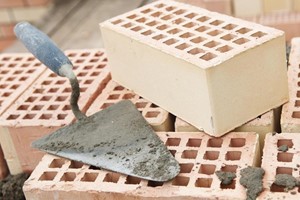A European research team has developed a novel building-integrated photovoltaic (BIPV) device by combining perovskite solar cell technology with textile ceramic technology (TCT) in the form of a solar brick. This development is part of an effort to create sustainable, market-ready solutions for energy generation within architectural design, led by Pedro Casariego and supported by European Union’s Horizon 2020 research initiative under the Apolo project.
The device, presented as a 300 mm x 117 mm solar brick, integrates a 99 mm x 99 mm perovskite solar module (PSM) into a ceramic framework. Its design uses an innovative, dry-construction approach with stainless steel double L-shaped plates to secure the PSM to the ceramic pieces. This dry-joint system, compatible with TCT, reduces the construction time compared to traditional ceramic cladding, which often requires manual bricklaying with mortar. The PSM itself is embedded within an inclined groove in the ceramic structure, allowing varied positioning to support aesthetic and structural flexibility.
TCT, initially patented in 2011, employs a ceramic grid on steel wire mesh and was designed primarily for façade claddings, curtain walls, roofs, and grounds. Its large ceramic shell dimensions (0.6-2 meters wide) facilitate quick coverage of extensive areas, enhancing both installation speed and construction cost-effectiveness.
The team subjected the solar brick to a range of tests, assessing durability under real-world conditions. These included impact, vibration, and thermal shock assessments, which demonstrated that while the solar brick was generally resilient, certain vulnerabilities in the ceramic were noted. For example, while hard-body impacts had limited effect on the PSM, the groove in the ceramic structure created some strength limitations. Furthermore, hail impact tests showed a minor reduction in efficiency, though the cell continued to function. Vibration tests revealed some fragility in the welding of electrical connections, with failures occurring during testing at 10 Hz, although the PSM voltage measurements remained stable.
Casariego emphasized the promising potential of this innovation for the construction market, stating that the project’s goal has been to make this technology commercially viable. Further research will be required to optimize the solar brick’s design, particularly to address the brittle nature of the ceramic components under certain stresses.
In a collaborative, cross-disciplinary effort, the research was led by scientists from Spain’s UIC and Flexbrick SL, working alongside Italy’s CHOSE research institute at the University of Rome Tor Vergata and France’s Alternative Energies and Atomic Energy Commission (CEA). While UIC and Flexbrick SL focused on integrating perovskite technology within architectural components at the modular and independent brick level, CHOSE and CEA concentrated on refining the perovskite solar module itself.
The research, published in Construction and Building Materials as “Design of perovskite solar brick for textile ceramic technology,” offers an example of how technological innovation can support the construction sector’s transition to sustainable, energy-generating materials. The European team hopes this approach will pave the way for the widespread use of solar-integrated bricks in BIPV systems.
By Emiliano Bellini












